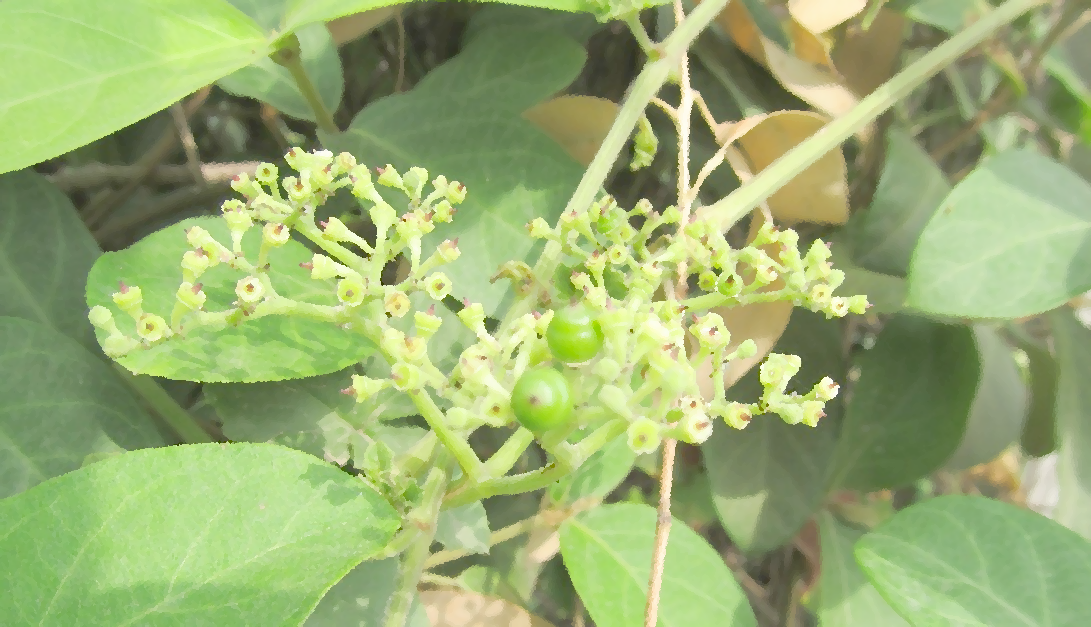Australian Bush Tucker includes a wide variety of edible plant species, including Cayratia trifolia. Cayratia Trifolia , hails from India, Asia, and Australia. It acts as a frail, climbing herb with leaves in groups of three. This plant, of medicinal importance, has shown abilities such as being a diuretic. It also helps fight against viruses, bacteria, protozoa, while possessing properties like lowering blood sugar, its use in cancer treatment, and more. Its powerful bioactive compounds include flavonoids, tannins, saponins, plus alkaloids and triterpenes. These elements are key in its diverse medicinal potential.
Aboriginal people in Australia have used the roots of the plant as Bush Tucker.
Australian Bush Tucker – Cayratia trifolia
Plant Description and Traditional Uses
Cayratia trifolia is a fragile climber, displaying leaves in groups of three, and bearing tiny flowers ranging from greenish to brown. The leaves themselves are shaped like ovals or oblong ovals. Historically, every part of this plant was utilized; it was employed as a diuretic, in tumor treatments, and to allay neuralgia. Additionally, it saw use in managing conditions like splenopathy and leucorrhea. Notably, a paste, made from its tubers, served as an antidote for snake bites.
The Tuber has traditionally been used as a food by Indigenous Australians, and is sometimes refered to as ‘Bitter Potato’. The Yolgnu People of North East Arnhem land refer to it as buwakul or djalaḏi‘
The Bitter Potato was sourced from a related Vitaceae species, Cayratia trifolia. This was available
during winter (April–August) when tuber growth was at its best. Preparation involves mashing the
root between rocks before it is roasted in ashes (Smith 1993; Wightman 1991). This yam also held an interesting ritual and spiritual connections with the wet season in the Northern Territory. (Williams 2012)
An analysis of Cayratia trifolia’s ethanol extract revealed an abundance of flavonoids, tannins, and saponins. These noteworthy compounds greatly enhance the plant’s profile for medicinal and therapeutic purposes.
The phytochemical assortment in Cayratia trifolia shows promise across several health arenas. Among its offerings are reputed antioxidant, anti-inflammatory, antimicrobial, and anti-diabetic features. Thus, affirming its standing as a vital botanical in both conventional and contemporary healing contexts.
Cayratia trifolia (L.) is the medicinal plant of the family Vitaceae. It is commonly known as Fox grape in English, it’s a native to India, Asia and Australia. Whole plant of Cayratia trifolia (L.) has been reported to contain yellow waxy oil, steroids, terpenoids, flavonoids and tannins by preliminary phytochemical screening.[11,12] Leaves contain stilbenes, piceid, reveratrol, viniferin and ampelopsin.[13] Stem, leaves and roots are reported to possess hydrocyanic acid and delphinidin. Several flavonoids such as cyanidins are reported in the leaves.[14] Root paste mixed with coconut oil can be used as a decoction. Roots grounded with black pepper can be used as a poultice on boils. Infusion of seeds along with an extract of tubers is traditionally given orally to diabetic patients to check sugar level of blood.[15] Paste of tubers is applied on the affected part in the treatment of snake bite. Whole plant is used as diuretic, in tumors, neuralgia and splenopathy.[16] The bark extract has been reported to have antiviral, antibacterial, antiprotozoal, hypoglycemic, anticancer and diuretic activities in animal models.[17] (Perumal 2015)
Bioactive Compounds in Cayratia trifolia
The ethanolic extract of Cayratia trifolia, a plant in the vast repertoire of Australian bush tucker, is a rich source of bioactive compounds. It includes flavonoids, tannins, and saponins. These compounds enhance the plant’s medicinal and therapeutic properties significantly.
Here are some of the key bioactive compounds found in Cayratia Trifolia:
- Stilbenes: The leaves contain stilbenes such as piceid, resveratrol, viniferin, and ampelopsin.
- Flavonoids: Several flavonoids are reported in the leaves, including cyanidins.
- Terpenoids: The plant is reported to contain steroids/terpenoids.
- Tannins: Tannins are also found in the plant upon preliminary phytochemical screening.
- Hydrocyanic acid and delphinidin: Stem, leaves, and roots are reported to possess hydrocyanic acid and delphinidin.
- Other compounds: The plant contains kaempferol, myricetin, quercetin, triterpenes, and epifriedelanol.
(Adapted from Gupta 2022)
Flavonoids and Their Antioxidant Activity
Flavonoids like kaempferol, myricetin, and quercetin boast strong antioxidant features. They primarily combat free radicals, bind to metal ions, and regulate signaling pathways. This makes them key in mitigating oxidative stress-related health concerns.
Role of Tannins in Therapeutic Applications
Another essential group found in Cayratia trifolia are tannins. These compounds offer antimicrobial, anti-inflammatory, and astringent benefits. Thus, they’re crucial in creating natural remedies and focused medicinal approaches.
Saponins and Their Biological Properties
The plant’s extract also includes saponins, glycosides with diverse biological effects. Saponins display antiviral, antimicrobial, anti-inflammatory, and immunity-boosting properties. This highlights the plant’s value as a natural repository of bioactive compounds.
Pharmacological Studies on Cayratia trifolia
Studies on the Cayratia trifolia, show that it works similarly to ascorbic acid in laboratory tests, fighting free radicals effectively.
This plant’s ability to fight oxidative stress comes from compounds like flavonoids, tannins, and saponins. These substances can tackle free radicals, bind metal ions, and even influence signaling pathways in the body. This makes the plant extract a potential aid in managing diseases related to oxidative damage.
Research has also delved into the plant’s ability to fight microbes, calm inflammation, and perhaps even slow cancer growth. The extracts have shown notable achievements against harmful bacteria, inflammation, and the growth of cancer cells. These results highlight the Cayratia trifolia’s exceptional value for medicinal purposes.
Source Links
- https://www.sciencedirect.com/science/article/abs/pii/S2222180812602990
- https://www.ncbi.nlm.nih.gov/pmc/articles/PMC4285641/
- Williams C, Medicinal Plants in Australia Vol. 3
- https://web.archive.org/web/20230623102525/https://sites.google.com/site/efloraofindia/species/m—z/v/vitaceae/cayratia/cayratia-trifolia
- https://www.sciencedirect.com/science/article/abs/pii/S2222180812600243


